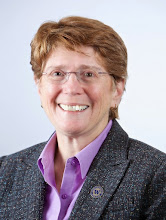At AALS I heard a presentation about a study investigating how jurors understand expert testimony, specifically about mitochondrial DNA (mtDNA). Valerie P. Hans, now a professor at Cornell Law School (formerly in the Department of Sociology and Criminal Justice at the University of Delaware), was one of the investigators who had mock juries -- volunteers from the Jury Assembly Room of a Delaware Superior Court -- view a videotaped mock trial, deliberate, take true-false quizzes, and be interviewed. Some juries were allowed to use various innovations, such as note-taking, asking questions of witnesses (the researchers had DNA experts on call via telephone), juror checklists, or juror notebooks.
The full study is:
B. Michael Dann, Valerie P. Hans, David H. Kaye, Testing the Effects of Selected Jury Trial Innovations on Juror Comprehension of Contested mtDNA Evidence Final Technical Report (Dec. 30, 2004).Based on the true-false quizzes and interviews, the investigators found that most jurors understood most of the basics about mtDNA. Comprehension was higher with any of these factors:
- more education, especially math and science courses;
- a job that involves math and science;
- participating in jury deliberations.
Jurors who had available one or more of the "innovations" found them helpful and supported their use (p. 66). But the innovations did not help comprehension much:
Contrary to our predictions, both before and after deliberation, no significant differences are found when comparing each condition separately to the No Innovations group.121 That is, compared to jurors who had no access to the innovations, the Juror Comprehension scores are not significantly higher for jurors in the various innovations conditions.(p. 70) However, a combination of innovations does help:
After deliberation, jurors in the Jury Notebooks condition, the Checklist condition, and the All Innovations conditions score significantly higher on the juror comprehension scale, compared to the jurors in the Jury Note taking condition. Thus, additional innovations on top of jury note taking appear to improve the jurors' comprehension of the scientific evidence.(p. 70) Chapter 8 – Summary of Findings and Conclusions and Some Practical Suggestions for DNA Practitioners (pp. 81-86) wraps it all up.
(updated Feb. 6)
Categories: empirical-studies, juries, experts, AALS, DNA, Hans, forensics

No comments:
Post a Comment